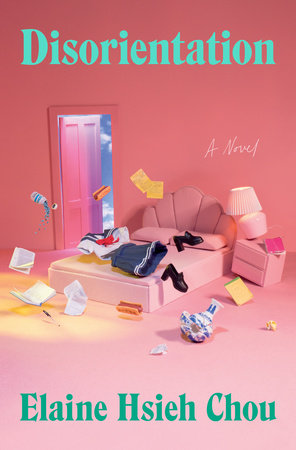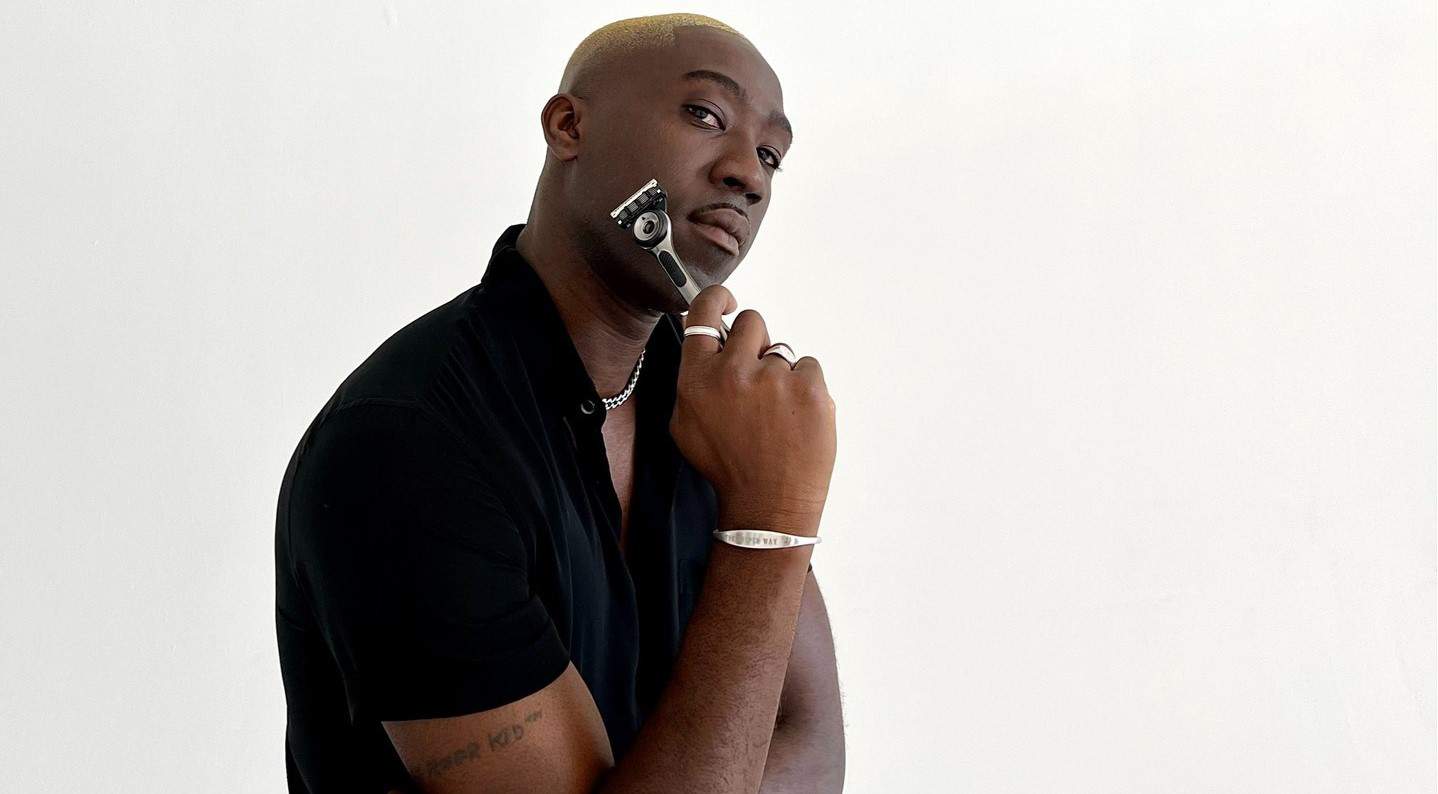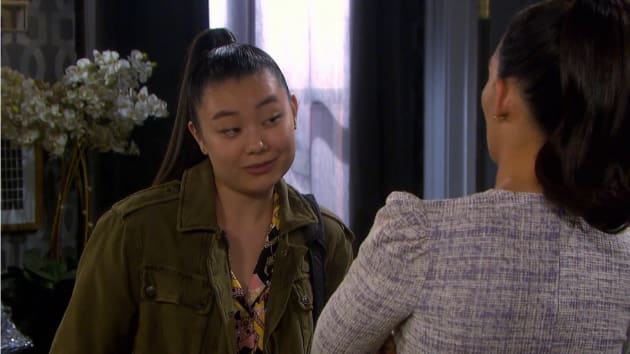As a writer of novels, short stories, flash fiction, and essays, Elaine Hsieh Chou has proven to be brutally incisive in her reflections on gender, sexuality, and race. She’s also dead funny. This March marks the one-year anniversary of her debut novel Disorientation, a hilariously wicked and sharp satire that follows Ingrid Yang, a Taiwanese American PhD student, as she navigates the treacherous terrain of academia, complete with the horrors of yellow fever, right-wing punditry, and Asian-on-Asian competition. On the eve of her paperback release, I chatted with Elaine about writing comedy, the aesthetics of joy, and how she uses fiction as a tool for revenge.
Anne Cong-Huyen: Congratulations on the paperback release of your book! How are you feeling a year after publication? How has the experience been in retrospect?
Elaine Hsieh Chou: After having been published, I’ve realized that making art is an act of generosity. Artists don’t have to share what they create. Making themselves vulnerable in the process is inherently generous. Someone has shared a private creation with me and they didn’t have to take that risk.
The experience of being published is indescribable, and when you go through it, you hardly know what’s happening. A year out, it still feels difficult to describe, because you’re so deep in it. It may take me many years before I can objectively understand what I went through, what I’m still going through.
ACH: Why do you think your book has hit such a nerve with Asian Americans in higher ed?
EHC: I think a lot of them relate to the inherent surrealness and absurdity of your identity—your culture, your history, your family—being studied. We are actual subjects of study. Because of that, there’s inevitably going to be conflict around who is “the expert.” And for many years in departments like East Asian Studies, the “expert” was never someone from the community being studied. Because we weren’t in the room, others got to control the narratives about us and pretend that these narratives were objective. Then, when we entered the room, our presence was perceived as a threat.
I think it can be really frustrating to be in a department, the way Ingrid is, where people explain her culture to her, and cannibalize her culture when no stakes are involved for them. When the studied subject studies the subject, there are stakes for us. We’re talking about our lives, our history, the future of our communities.
The other reason I think the story has resonated is because academia is rife with scandals around identity and “who gets to write what.” These scandals show the white anxiety around our growing presence.
ACH: A throughline I’ve noticed in a lot of your writing is the underlying sense of trauma—both the trauma that comes out of events like the Atlanta spa shootings, as well as just perpetually registering overt racism, sexism, misogyny, and microaggressions—that we experience by virtue of existing as Asian women. When writing Disorientation, what was important to you in crafting a protagonist like Ingrid who has racialized trauma?
EHC: I recently read something that really clicked for me: A therapist said to an Asian patient that all POC who’ve grown up in majority-white communities have racial trauma. It’s not even a question of if you have it—you just do. And I thought, Of course! There is no way to escape unscathed. This therapist reframed trauma not just as something that happens on an individual scale, but as something that is continually happening on a grand scale in American culture.
As a femme-presenting East Asian person, my lived experience came with a unique set of problems: I was both hated and desired. When I started writing the novel in 2016, I wasn’t seeing this experience portrayed outside private conversations with my friends, in the broader culture of books, TV, and movies. So when I was crafting Ingrid, I made her a character whose life has largely been defined by the intersection of her race and gender. From a very young age, she is sexualized in a racist way. She has a traumatic memory of a white boy trying to lift up her skirt because he wanted proof she had a “slanted pussy.”
I’ve had Asian women readers come up to me and say how shocked they were to see something that felt like a secret within our community exposed on the page, but also how it validated the trauma of this kind of core experience. It’s something that I think can be confusing and contradictory for Asian women, especially when we’re young and figuring out our own desires and wondering, “Well, isn’t it good to be desired?”
The funny thing is that Ingrid ends up saying disparaging things about Asian men’s desirability. It’s as if all the hurt she’s received can only exteriorize through more hurt. We see her doing the work of white supremacy until she can finally wake up and realize that no one wins this way.
ACH: In a recent workshop I took with you, you mentioned the role of writing—and of humor and satire in particular—as a form of revenge and recovery. Can you elaborate on what this means for you? Is it about catharsis, about getting the last laugh?
EHC: Satire has always been about power. True satire is punching up. When you punch down, you’re no longer writing satire—you’re just being an asshole. The desire to skew power comes from feeling powerless in some aspect of your real life, and wanting to wear the clothes of power, trying it out on the page, because you can’t do that off the page. If you’re not getting actual justice in the real world, how do you ever get a taste of it? We can live an entire lifetime, and never know what that feels like. Fiction is a healing and therapeutic space because it is an even playing field where no one, at least on the page, can stop you from exploring what accountability looks like for you. That’s something we talked about in that class: Rebranding revenge so it’s not negative. Revenge can be beautiful; it’s another way to access justice.
Specifically with Disorientation, I realized that—without a time machine—I’d never get payback for how Asian women have been portrayed by the West for centuries. When we’re born into this world, what’s really painful is that all of us think we’re individuals, right? And that people will see us with all the three-dimensionality with which they see themselves. But being a racialized person is to slowly peel back the layers of what’s come before you, and realizing, oh, I was born into a world where “Lotus Blossom” and “Dragon Lady” narratives have dominated for 200 years. I didn’t consent to these narratives and yet they’ve shaped how people see me—and I mean this in the most literal sense, to the point where my safety has been put at risk.
Realizing that I could never seek true revenge—not just for me, but for every Asian woman who’s been harassed, assaulted, and raped and murdered because of these myths that we are subservient and hypersexualized—I had to seek revenge another way. In that sense, Disorientation is equal parts love letter to Asian women as flawed individual humans, and revenge on why the need to prove such an obvious fact exists in the first place.
ACH: Even though the novel tackles some heavy issues, there are also a lot of moments of joy. Can you talk about how joy functions in the novel and why it was important to you?
EHC: Historically, joy hasn’t been taken seriously as an aesthetic choice. It’s not even seen as an aesthetic choice. And so with Disorientation, I wanted to ask: What does joy look like if you make it craft? What does that break open in storytelling and how we understand the possibilities of fiction? Craft is never just about formal choices on a language level, craft is always about content, too. If we understand playfulness and joy as subversive craft decisions, we would have to question our assumptions about what is intentionally crafted versus what is considered a thoughtless byproduct. The decision to build joy into the language of the novel was also a decision to believe that we are so much more than our trauma. We deserve to laugh, not just cry.
ACH: I know you’ve been adapting the novel into a screenplay for a feature film. How is that going? What are you working on next?
EHC: Adaptation is a way to explore a kind of second life of the novel. It’s a difficult, but also thrilling, challenge to find the essence of your story. And not only that, but to tell it in images, and to avoid making it an exact replica of the source material—because that would be boring! I want to challenge myself to ask, How can the film do what the book couldn’t?
I’m also working on my short story collection Where Are You Really From, which is multi-genre and quite different in voice compared to the novel. There will be a little soft sci-fi, horror, and some mail-order brides that show up in the mail.

























































